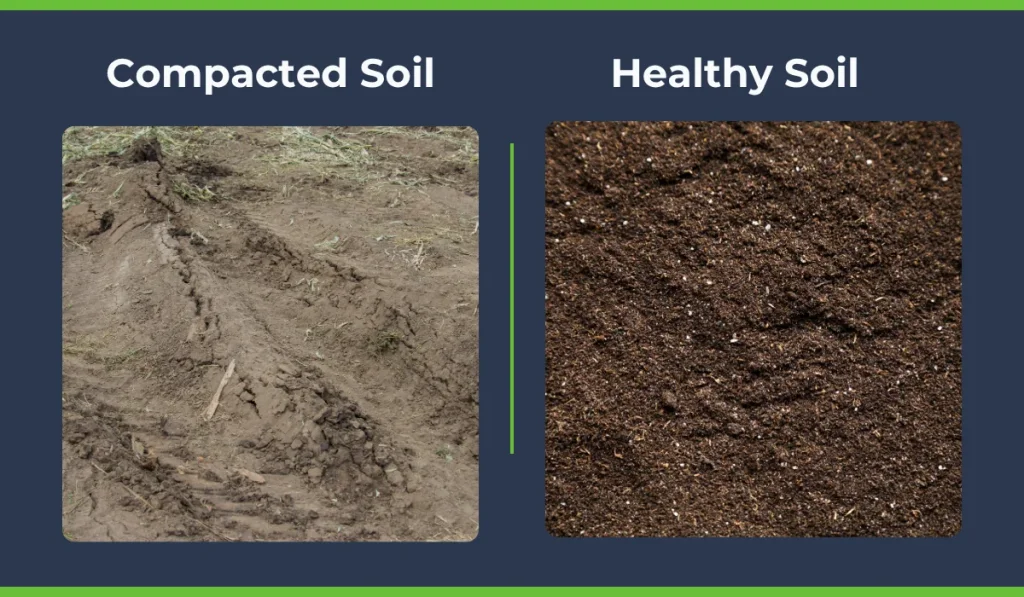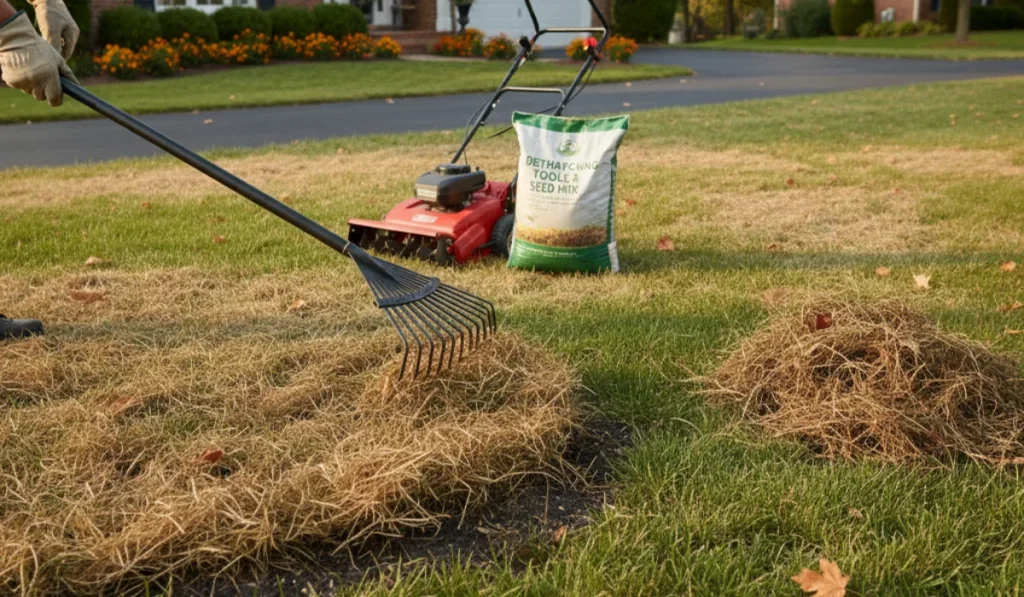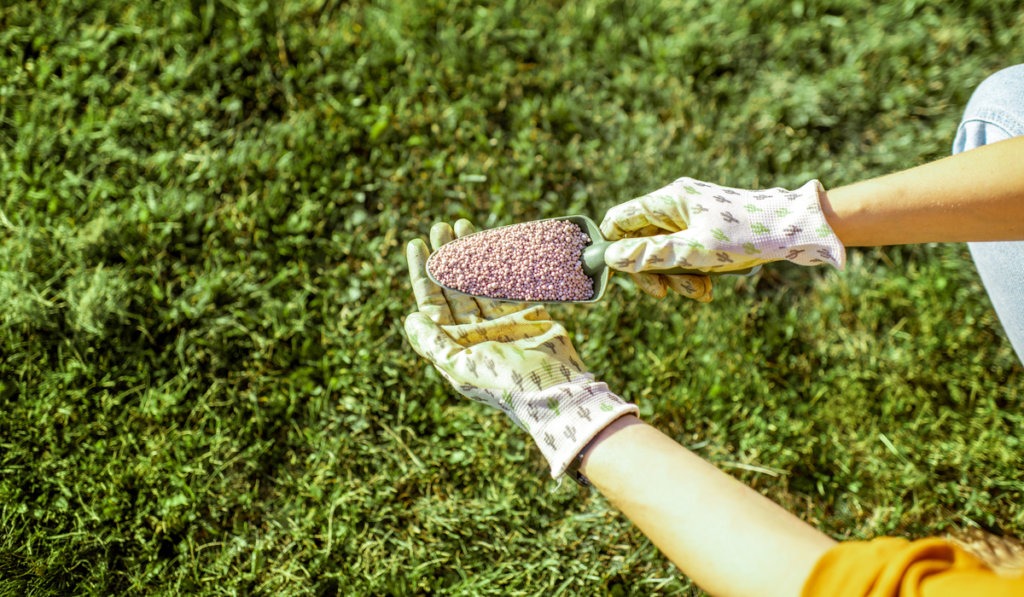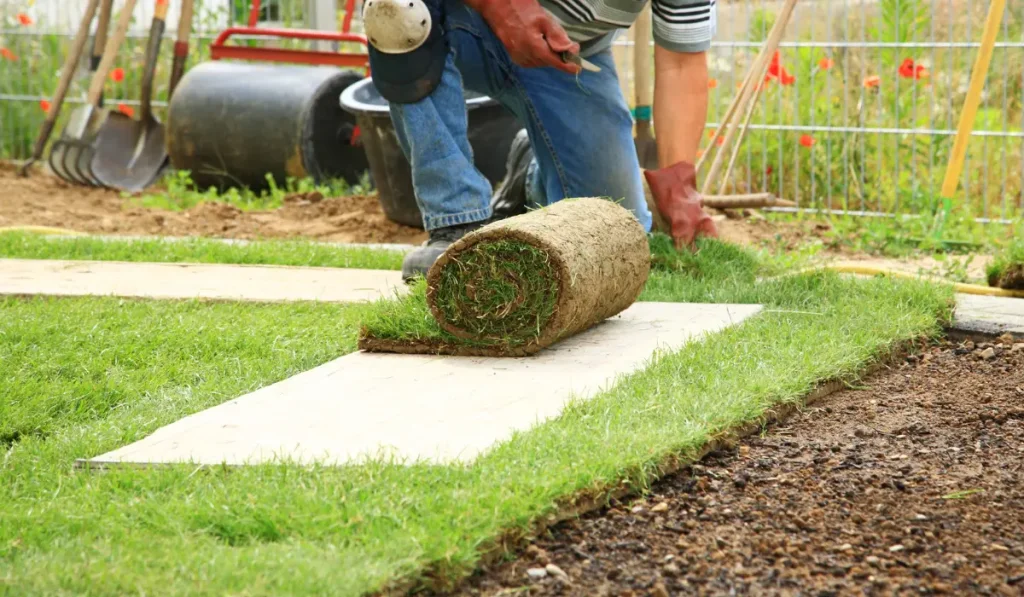When your lawn soil feels more like pavement than earth, you’re likely dealing with compacted soil. It’s a common problem across California and one that can quietly choke your lawn from the ground up.
Compacted soil prevents air, water, and nutrients from moving through the soil structure, making it harder for plant roots to establish and grass seed to germinate.
But with the right lawn care steps, you can fix it and rebuild healthy soil that supports long-term plant growth.
Here’s how to bring your lawn soil back to life.
Key Takeaways
- A compacted lawn can often be identified using a soil test or a simple push with a screwdriver.
- Thatch removal and core aeration create space for water, nutrients, and air to reach deep into the soil.
- Clay-heavy soil benefits from gypsum and organic matter, which help improve soil texture and support root growth.
- A healthy lawn depends on deep watering, careful mowing, smart overseeding, and avoiding heavy foot traffic.

Assess Your Soil Type and Compaction Level
Start by figuring out what type of soil you have.
Do a soil test to check its type, pH level, and nutrients. Grab a screwdriver and push it into your soil. If it meets resistance, you’re likely working with hard soil that needs immediate attention.
Clay soil tends to compact faster due to its fine soil particles, while sandy soil drains quickly but may not retain enough moisture for growing grass.
Each soil type needs a slightly different approach when it comes to tillage, soil amendments, and irrigation.
Dethatch to Open Up the Soil Surface
Before you go straight into lawn aeration, check for thatch.
Dethatching clears out the dense layer of decomposed material sitting between the grass blades and the soil surface. When that layer gets too thick, it blocks water and air just like compacted soil does.
For lawns with years of built-up neglect, especially ones without mulch or topdressing, dethatching is essential. Use a garden fork or a mechanical dethatcher with vertical tines to tear through it.
Core Aerate to Fix Compacted Soil
Lawn aeration, especially core aeration, is one of the best ways to fix compacted soil. This process pulls out plugs of soil, increasing pore space and allowing nutrients and water to travel deeper into the lawn soil.
In clay-heavy regions, aerating once a year, or even twice, can make a big difference in breaking up compacted areas.
If you’re handling a larger lawn, renting a plug aerator or tiller designed for heavy-duty work can save you time and effort.
Mix in Organic Matter to Improve Soil Health
Once you’ve aerated, it’s time to work on your soil health.
Adding compost or peat moss helps improve soil texture and feeds the beneficial microbes that naturally loosen soil over time. Topdressing with these materials right after aeration allows them to filter down into the holes, strengthening the soil structure and encouraging deeper root growth.
You can also use grass clippings, decomposed wood chips, or aged mulch as part of your soil amendments strategy.
Apply Gypsum for Compacted Clay Soil
In clay soil, the small particles stick together and limit drainage, leading to poor drainage and hardpan layers. Gypsum helps by loosening the bonds between those particles, improving soil texture and permeability without altering soil pH.
It’s a solid option for lawns compacted by heavy equipment during home construction, which is common in newer subdivisions across California.
Overseed With Resilient Grass Seed
Now that your soil is opened up and enriched, it’s the perfect time for overseeding. Use a high-quality grass seed blend suited for your region and traffic levels.
If you’re reseeding a compacted lawn in a high-use area like a front yard or a spot where foot traffic is common, choose varieties known for deep root systems.
Overseeding after aeration gives your new grass better contact with the topsoil, improving germination rates.
Adjust Your Mowing and Watering Routines
Even with great soil, you won’t have a healthy lawn if you’re mowing and watering the wrong way. Keep your mower blades sharp and avoid cutting more than a third of the blade at a time.
When watering, go deep and infrequently to train plant roots to grow downward. This practice not only supports stronger turf but also helps prevent future compaction, especially when paired with seasonal topdressing.
Take Steps to Avoid Future Compaction
Preventing compaction starts with smarter landscaping and lawn care.
Reroute high-traffic paths with stepping stones or mulch. Avoid using heavy equipment on saturated ground, and rotate play areas to give the soil time to recover.
Earthworms and other soil-dwelling organisms thrive when the environment is balanced. And they naturally help aerate and maintain your lawn.
Tillage should be limited to when it’s necessary.
Disturbing the soil surface too often can disrupt microbial life and break up the structure you’ve worked to build.
Frequently Asked Questions
Can compacted soil lead to standing water after it rains?
Yes, compacted soil often causes poor drainage because water can’t move through tightly packed soil particles. That leads to puddles or soggy patches, especially in low areas or near downspouts.
How do pets contribute to soil compaction in the yard?
Pets, especially dogs, tend to follow the same paths across your yard. This repeated foot traffic compacts the soil over time, reducing pore space and stressing the grass in those areas.
Is it worth hiring a professional to fix compacted soil?
Yes, especially for large lawns or very compacted areas. Professionals have specialized tools and can recommend soil-specific treatments that improve results and save you time, effort, and guesswork.



